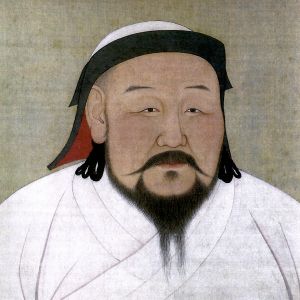I’ve been watching the Marco Polo series on Netflix not for the melodrama and frontal nudity, but for the real estate considerations. Primarily, how did Kublai Khan not freeze his funny little hairdo off? How warm can you really make a ger?
Pretty warm, apparently. Thanks to sheep.
The Mongolian ger, aka yurt, is a lightly-woven basket, covered with layers of felted wool. The ger is modular from the get-go, as befits a culture of sheep-followers. Accordingly, the insulation also is easily adjusted. The basic unit of insulation is a flexible version of foam insulation board, known as felted wool. The raw material is mined from a sheep, then whacked into dense sheets about an inch thick. This oily product is water and wind-repellent, and has an R-value of a bit under 1. In the winter, you pile on as many as you want. Three inches of felt mat provide an R value similar to your double-pane window (2). The old balloon-construction houses of Maine only managed R-4 or -5.
But insulation is only part of the story. Materials also lose heat through radiation. Glass is a fantastic radiator, shedding your household heat out into the winter air. Felt, according to research by a bunch of sheep, yak, camels, llamas, and goats, is not.
And air infiltration is important as well: That old Maine house has sprung so many leaks since it was built that you may as well just leave a door open all winter. The circular, even spherical, shape of the ger sheds cold wind instead of fighting it; and apparently the oily felt itself is remarkably windproof. (Modern gers have a canvas cover that helps, too.)
So Khan & Co. weren’t exactly roughing it on the Mongolian grasslands. Plus, if Netflix’s account is to be believed, no Mongolian ever spent a night alone.
